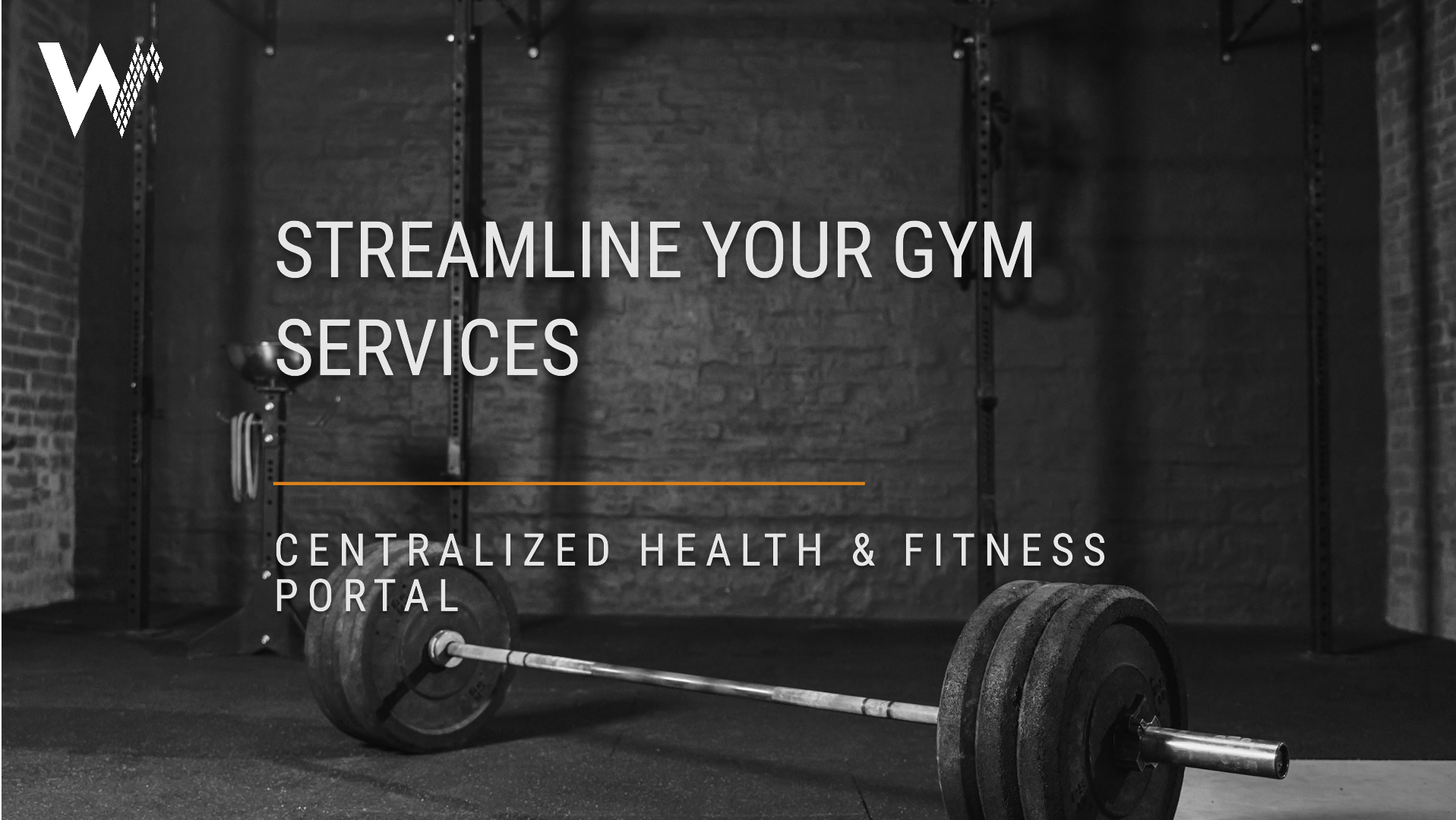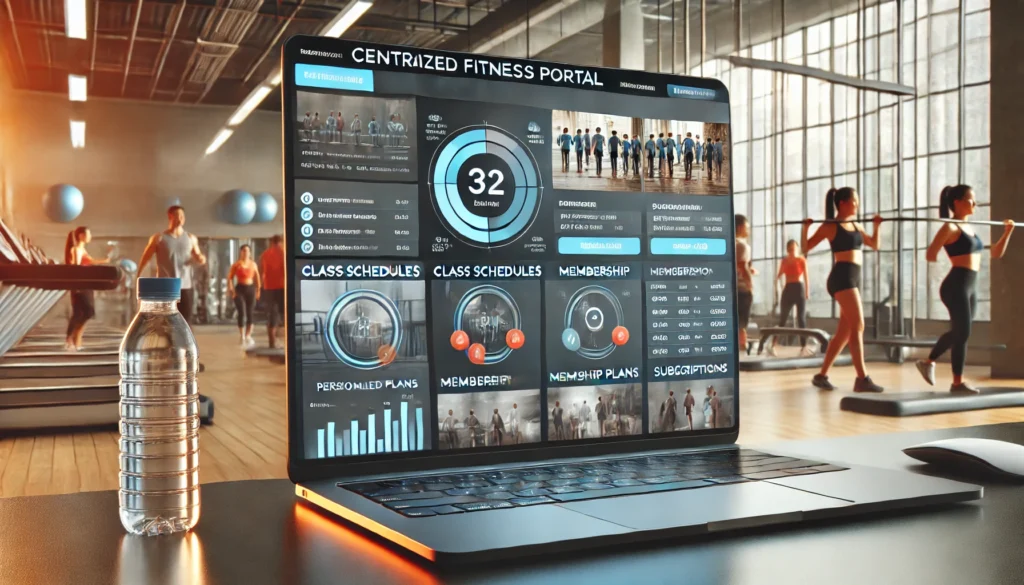Building a Centralized Health & Fitness Portal: Streamlining Services for Gyms and Wellness Centers

The health and fitness industry in the United States is experiencing an unprecedented boom, with people prioritizing their well-being more than ever. From bustling cities like Los Angeles, where fitness culture permeates the daily routine, to active communities in Austin, Denver, and Seattle, more individuals are seeking accessible, personalized fitness solutions. As this demand grows, gyms, wellness centers, and personal trainers across the U.S. are increasingly adopting technology to meet the evolving needs of their members.
A centralized health and fitness portal can serve as a one-stop solution for all fitness services, whether you’re running a gym in New York City, managing wellness centers in Miami, or offering personal training sessions in San Francisco. By integrating class schedules, personalized training plans, and member management into a single platform, fitness businesses can improve operational efficiency while offering clients a seamless experience.
In this blog, we will explore how a centralized portal can streamline services for fitness businesses, making it easier to manage memberships, book classes, handle payments, and even provide subscription-based access to premium wellness offerings. The ultimate goal is to provide users with convenience, while ensuring businesses can efficiently meet the increasing demand for customized fitness services.
The Rise of Fitness Technology in the USA
Technology has revolutionized the way Americans approach health and fitness, especially in states like California and Colorado, where outdoor activities and physical well-being are deeply ingrained in the culture. With fitness apps, wearable devices, and virtual training on the rise, the demand for more integrated and accessible fitness platforms is growing. This shift has led to the development of centralized health and fitness portals that offer comprehensive services for both businesses and their members.
In regions like Texas and Florida, where fitness studios and gyms have seen rapid expansion, the need for technology-driven solutions is apparent. Whether it’s large gyms offering a variety of classes or boutique wellness centers focusing on personalized care, fitness businesses require a streamlined system to keep up with the competitive market.
Key Features of a Centralized Health & Fitness Portal
A centralized portal brings multiple services under one umbrella, simplifying operations for fitness businesses while enhancing user engagement. Let’s break down the core features that can make such a platform indispensable for gyms and wellness centers:
1. Comprehensive Service Management
For gyms and wellness centers in places like Chicago and San Diego, where competition is fierce, having an easy-to-navigate system for service management is essential. A centralized portal allows businesses to offer various services, from group fitness classes and personal training sessions to wellness consultations and nutrition advice, all managed through one platform.
This makes it easier for clients to discover and book services that fit their needs, whether they are signing up for a yoga class or scheduling a one-on-one session with a personal trainer. The portal also helps fitness businesses manage resources efficiently, from class sizes to instructor availability.
2. Member Login and Personalized Plans
Cities like Portland and Nashville are known for their tight-knit fitness communities, and personalization plays a key role in keeping clients engaged. A portal with a secure member login feature allows users to access personalized fitness plans, track progress, and receive recommendations based on their goals. Whether a member is working towards weight loss, strength training, or mindfulness, the portal can offer tailored plans and allow members to interact with trainers for feedback and adjustments.
3. Seamless Online Booking and Payments
Fitness centers in cities like Phoenix and Las Vegas are embracing digital payments and scheduling to streamline operations and improve customer satisfaction. A centralized portal should offer a seamless booking system for classes, personal training sessions, and other services, allowing users to reserve spots with just a few clicks.
Online payments also play a critical role in modern fitness businesses. The ability to accept payments online, whether through credit cards, digital wallets, or direct bank transfers, simplifies the process for both customers and business owners. Integrating automated billing and recurring payments for memberships ensures that businesses maintain a steady revenue stream while reducing administrative work.

4. Subscription-Based Memberships and EMI Options
Subscription-based models are becoming increasingly popular across the United States, particularly in cities like Boston and Dallas, where clients prefer flexibility in their fitness routines. By offering subscription-based memberships, fitness businesses can provide clients with the freedom to choose monthly, quarterly, or yearly plans, catering to varying budgets and commitments.
Additionally, an option to pay via EMI (Equated Monthly Installments) can open doors for clients who want access to premium services but may not be able to pay upfront. Gyms and wellness centers can offer premium plans—such as one-on-one coaching or exclusive wellness packages—while making them more financially accessible.
5. Integrated Marketing and Promotions
In fitness-conscious cities like San Francisco and Atlanta, where businesses compete to attract health-driven customers, marketing plays a vital role. A centralized portal with integrated marketing tools can help gyms and wellness centers reach their target audience. From sending promotional offers to current members to using push notifications for class reminders, a well-rounded marketing strategy can keep clients engaged and coming back.
Through a centralized portal, businesses can also offer in-app discounts, manage referral programs, and share updates on new services or events, helping them stay connected to their community.
Benefits of a Centralized Portal for Health & Fitness Businesses
Implementing a centralized portal offers a wide range of benefits to fitness businesses, particularly in major fitness hubs like Los Angeles, Miami, and New York. Here’s how it can help both the business and its clients:
- Improved Efficiency: By automating key functions like scheduling, payments, and memberships, gyms and wellness centers can significantly reduce administrative tasks, allowing staff to focus more on client service and engagement.
- Enhanced User Experience: With a user-friendly interface, clients can easily navigate the portal, book classes, and manage their fitness plans, ensuring they have a seamless experience from sign-up to check-out.
- Scalability: Whether you’re running a single gym or a chain of wellness centers, a centralized portal provides the flexibility to scale your operations. As your business grows, so can the platform, accommodating more members, services, and locations without sacrificing functionality.
- Data Insights: A centralized portal collects valuable data on customer preferences, popular services, and payment trends, allowing fitness businesses to make data-driven decisions about service offerings and marketing strategies.
Conclusion: Streamlining the Future of Fitness
As health and fitness trends continue to evolve in the United States, especially in fitness-forward cities like Denver, San Diego, and Austin, businesses need to keep pace by adopting integrated technological solutions. A centralized health and fitness portal provides the tools needed to streamline operations, enhance customer experience, and grow the business.
From seamless service management to flexible payment options like EMI, these portals are revolutionizing how gyms and wellness centers operate in today’s fast-paced, tech-driven world. By offering a centralized, easy-to-use platform, fitness businesses can position themselves to attract and retain more members, ensuring long-term success in a competitive market.
If you’re a fitness business owner in the U.S., especially in states like California, Texas, or Colorado, now is the time to explore how a centralized fitness portal can transform your operations and provide better services to your clients.
Visit our main website to learn more about our solutions, or explore our range of services including Shopify development, Laravel-based web solutions, and custom e-commerce platforms. Ready to take the next step? Get a quote today and see how we can help streamline your fitness business!









